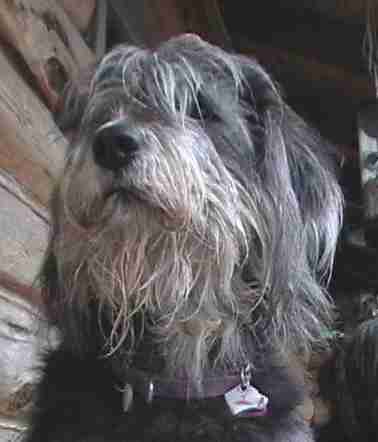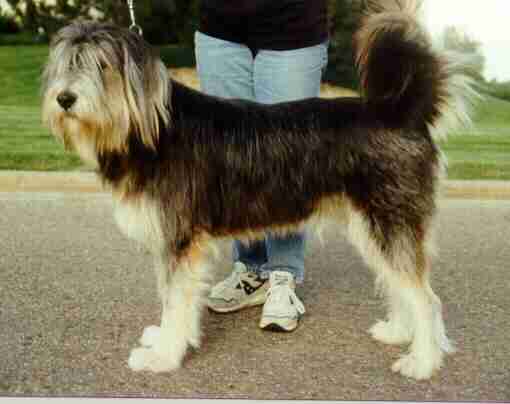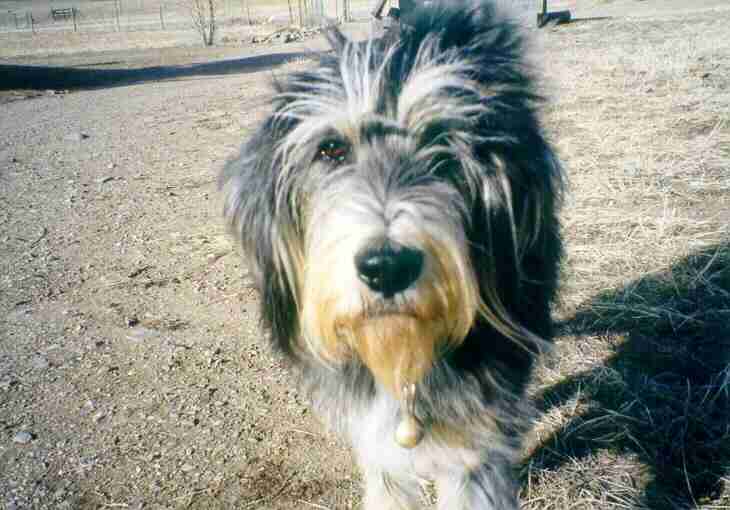|
DO Khyi - Himalaya - Show in 3000 m. height Author: Hedy Nouc`, UR 1980
|
||||||||||||||||||
|
It was already `worth a journey`, my small expedition in the Himalaya in the May of this yearly: The jumbo jet brought us into a New Delhi, where the mercury column varied between 44-48 degrees. Then it goes with a smaller machine after Amritsar, the city of the `Goldenen temple`. Also here the same, high temperatures. Of Amritsar with the passenger car approx. 250 km to Palampur. Indian traffic conditions are like that that this distance is not to be mastered under 6-7,5 hours. However two flat tyres had to be gotten over and that are also not amazing, since the roads are covered with hoof nails among other things. In India left-hand traffic - however only in critical situations - is, otherwise and drives everything goes in the center of the road. That can be done thus in such a way before itself that e.g. two passenger cars come to meet themselves frontally, in order to then evade in last second hair sharp. The pedestrians do not behave the cars and penalties opposite differently. A nerve-killing play from European view. With the arrival in Palampur one feels first drawing a deep breath the moderate temperatures. The Himalaya visibly moves closer and the wooded region works doing good. At the foot of the Himalaya the village `Bir`. Here a settlement of Tibetan refugees is at the mountain-slope. There is the `martial ' Khampas, which formed the escort protection, when the Dalai Lama from Lhasa fled. For Indian conditions are here relatively good house and housing conditions. A temple with considerable inventory, a monastery school with numerous pupils, a carpet manufacatory and the first Lhasa Apsos. The friendly abbott permitted a photographing within the temple. In the carpet manufacture Indian girls were informed, the wages for all day long in the carpet production are 4 Rupees = 1.00 DM (0,40 $). The quality of the Lhasa Apsos was not under any circumstances good. From it that the hair dress was poor, black nose sponges and dark eyes a rarity were completely apart. I saw a really good Lhasa Apso during my entire India journey only in the residence of the Dalai Lama in Dharamsala. Completely bright Apsos with strong lack of pigment and others with brown complex were prevailing. In Bir neither Tibet Terrier nor Tibet Spaniel still Do Khyi were to be found. The Tibetan refugees, who integrated themselves quite well in India, are friendly and industrious humans and have also more sense for cleanliness and a certain order e.g.. Common kitchen for the old persons. The show of the Do Khyi in the Himalaya in 3000 m. height, the first event of this kind, took place some days later. The Indian animal protection authority had given not only its permission for it, but also for the owner of the best male and the best bitch per a living merino - ram to had donated. A precious gift for hirten, who can improve the quality of their herd then with this dam a herd, which is nearly always accompanied by one or more Do Khyi. The Do Khyi do not have there the same function, which here a shepherd dog has, but they are more protection dog against the bears and leopards. In order to steer a large part of the herds with their lift by the mountain valley, in which our posts - show was planned, already attractive prize had to be ordered. Posters in `Hindi`, the Indian national language, were attached to appropriate places and referred over newspaper and radio to this event. The idea for this came from a German living in India, which is since 2 years owners of a Do Khyi bitch. We were now very strained, as many DO Khyi would appear themselves, because our well-known system of the previous registration cannot be practiced in the Himalaya.
From Palampur it went then with three jeeps into the mountains: Representative of the Indian animal protection authority, German engineers, Indian drivers, Indian carriers and our Indian servant that at the same time were also our cook. After 1,5 hours our team became larger; still load animals were added. Then we screwed ourselves further uphill. Over approx. 25 km double bends we needed further 2 hours of travel. For us hardly conceivable, but we drove the whole time by forests, those predominantly consisted of Rhododendrentrees. High trees, which lend an overwhelming sight to this landscape during the bloom time scattered with cherry red coloured umbels. Then the last possibility of turning came for our jeeps and our 7 hours foot-walk began. We had to master still approx. 1200 m. difference in height during this time. In the center the cultivation of potato seeds ( small farm) was appropriate for the distance, whose leader and manager had contributed very much to the organization of the show. Here we made a break of an hour and regaled with tasting good for Indian tea, vegetables from large brown beans and peppered pancake. Then it goes further after Palachik, our final goal. Palachik consists of 5 stone huts. 3 of it is open and is used by pulling through hirten for the night. The two different are locked. They belong to the Indian forest administration and are intended for the overnight accomodation for forst strangers. The forest administration had given us permission for the use. In order to make our stay pleasant, these stone huts had been reconditioned before Camp beds were set up. In the separate kitchen little house prepared Jagdish, our servant and cook, the meal: Indian small sausages, Pellkartoffeln and cucumbers. During the day we had approx. 30°C in the shade, at night fell the thermometer on nearly 0°C. Despite the sleeping bags and the thick woolen cloth we froze deplorably. The next night made we then a tidy chimney fire and dressed still more warmly and then was it to be borne. The breakfast tasted the better after such night: Bread and toastbrot, jam, breakfast meat and the good tea, for which directly with milk and sugar one prepares.
Many black Do Khyi embodied the `Bara Benghali Typ` in such a way specified. The predominant part of the Black and Tan's the `Bharmouri Typ` and the gold coloured `Lahauli Typ`. These 42 dogs each age now in being entitled distance bound to short posts with ropes, which manufacture the Indian women in manual work. For the herdsman it was joyful seeing again, often a meeting after many years. Some had their wives with itself. Then came 2 Tibetan families, which broke a tent open, in which it grain bags, which attached the load animals (donkeys and mules) , stacked. These grain bags bought the by-pulling herdsman, in order to prepare highly above in the mountains their Shapatti - that is pancake bread -. This men lives for months on this bread and goat milk and are slim, healthy and tough; I hardly saw a herdsman with a tooth spacing. Some carried earrings, so that they are male sex with their re-incarnation again. Also the Do Khyi become with bread, to which highly in the mountains corn flour is mixed and goat or sheep milk nourished. None of the dogs made a weak impression or had skin problems. Strengthen scissor bites with most, with some pincer bite however no undershot bite (jaw)! The fact that with 42 specimen all of excellent type could not be was clear. But all had a springy gait and firm straight backs. In these regions each dog, that with impairments at the spinal column would be the hip or the rear spar and would be afflicted, a death candidate.
The herdsman with their dogs must be able
themselves to move as with us the dancers on the wire rope here. We met
then first once the herdsman, in order to explain to them, on which they
have to respect with the far breed. Good interpreters, that translated
everything on Hindi, were to us at the disposal. One of the largest problems
with the breed is that nearly everything the best male is castrated. The
herdsman are in most cases forced their Do Khyi - to castrate males, in
order to hold them at the herd. That looked then with the show in such a way
that of the 13 best males 10 were castrated. But back to the exhibition: In order to win the desire-worth price one Merino-ram, the herdsman gave themselves all trouble to present their dogs in best condition. One still regarded to some Do Khyi that under an icy source of rock the dust from the skin had been washed to them briefly before. One had others, in order to simplify the care, more briefly sheared the hair. Now the evaluation began and then the addition of the achieved points. For achieving the first price was precondition that the dog could not be castrated. Thus the Merino - ram fell to a black male, which looked rather moderate compared with the castrated. The owner of the most beautiful castrated male reacted to this decision in probably internationally well-known, typically masculine kind, because it got drunk in such a way that it could not rise on the other morning and had let its grandchild with the herd proceed.
The owner of the most beautiful bitch received the second Merino - ram. The two second Prices were staff flashlights and third Prices leather collars with linen; all luxury articles for Indian hirten. Proudly then the winners with their winner dogs, Merino - rams, staff lamps and leather collars presented themselves our cameras. Then the animals were supplied and met preparations for a parting celebration. In one of the stone huts liquor was burned and the herdsman began a drinking-bout with nonstop singing; a whole long night - on the next morning the departure and the lift began at the same time into still higher regions.
The load animals were packed, put on its foal small bells and put red ribbons to the ears. And again this captivating play, the taking off herds with their Indian sheep, the slim, shorthaired Indian goats with their long ears and the very proudly strained necks and the Tibetan goats, which I would like particularly to mention. Tibetan goats are probably with the most beautiful their kind, by their wonderful, long hair in all colors (most are however white) and their front curls. These animals achieve true balance document, which would be circus hoar frost here. They climb over branches, by which they can be carried still straight, and must be completely free from giddiness. Unfortunately one cannot introduce it at present yet with us.
- in this connection I would like to refer to a, in my knowledge up to then unknown dog race, which pleased me unusually well. It were flockguards from the Kinnaur - area. (KyiApso) This flockguards are so in my pleasure, that I will get a pair of them for breeding with myself over here. At first sight they look like a very large Tibet Terrier with somewhat shorter hair. The hight of shoulder lies between 20 and 24 inches. Likewise all colour-varieties of the Tibet Terriers and much nature similarity. This " Kinnauri Kutta's " (Kutta = male and Kutti = bitch) fulfills the same functions as the Do Khyi; they appeared me still even more sociable. Since we had not counted the appearance now on this race also no price for it had been suspended. 12 Kinnauri Kutta's had appeared themselves, which were amazingly even in the type and offered responding colour-varieties. Of light gold over charcoal to Black and Tan; one did not know, what was more beautiful spontaneous I donated an interest on loan and the most beautiful pair searches out - also a Tibet Spaniel however in oversizing was at a herd. I experienced the second Tibet Spaniel - unfortunately also very bad in the type -, when I visited an Indian general.
The rear walk of Palachik began on the next morning. Up to the stopping point, where our jeeps waited for us, we needed again 7 hours. We met still individual herds and could experience, how at a steep rock slope a Indian a lambkin saved erring width unit and supplied it to its distant herd again. The Indian herdsman have shrill whistles a special ability to discharge. Each herdsman has its " own " whistle, so that herd and dogs with unbelievable security orient themselves to it; likewise the herdsman among themselves, if they feast at appropriate distance with their herds. In the afternoon against 17 o'clock we reached our domicile in Palampur; the breaknecked serpentine departure was to end. Retrospectively I am surprised that not we, but the jeeps got over these adventures, because with us such vehicles stand only on the scrap iron waste dump. .............subsequently stay in Dharamsala / north India, the exile seat of sHL Dalai Lama. Now no iron curtain can be installed in the Himalaya at the border and who wants, can went " black " over there. There are also sufficient people monk -, which " climbs " constantly back and forth. Thus us also a monk brought of Tibet a couple of Do Khyi also, which landed well here two months ago in Frankfurt and in-lived itself surprisingly. The male " Sindu " is from a nature sharpness, which lets the heart strike more highly; the bitch " Chechi " is calmer, but just as nerve strong and make to fear before nothing. Sindu made it -although only 7 months old- to it's duty to educate our Great Danes which succeeds to it without special effort.
In this connection I would like to quote from
an essay, which 1977 the already over 90 years old well-known Indian
cynologist Mukandi Lal published: " the today's shepherd dog of the
Himalayan areas (north India) is called usually in these regions " Bhotia ",
because it comes originally out " Bhot " (Tibet) and is brought still
further from Tibet (Bhot) with Tibetan sheep and goats to India by people,
which live the close Tibetan border and which one " calls Bhotia ". This
Bhotias (humans) from the Garhwai area, which lives during the summer months
into that about 100 villages to the Mana and Nito and other mountains in the
proximity of the Tibetan border, came downstairs during the winter months,
in order to live at different places around Channoli, which is distant 60
miles for approximately from the Tibetan border and the passports of the
Mana and Niti. The paths after Tibet of the Mana and Niti (villages of the
Bhotias) are so narrow that only sheep and goats can be used of the Bhotias
as luggage animals. They carry bags on their back, which is filled with
grain, sugar, salt and borax. These Bhotia traders bring each summer from
Tibet some few longhaired and wild looking Tibetan dogs with itself to guard
their sheep and camps around. We, whom we live in Garhwai, call these dogs "
Bhotias ". These Tibetan Do Khyi or Bhotiadogs in India resident and in
which we with dogs will cross them, which were brought here already in
former times from Tibet, and such, which were bred in the Himalaya, produce
we another type of the Bhotiadogs. These dogs are inserted now use the
Indian Himalaya regions for guarding the herds of sheep. Which concerns
however the geneological tables, one said to me that none of the dogs in
Tibet has such, although attempts were made, to breed dogs of same kind. If
however a bitch is covered by a male, which it chose itself which is however
not from its caste (race), that is not complained of. For these people a dog
is a dog all the same, from which race or variety it may also be. That
passed exactly the same, also in our country (India), where also no efforts
are undertaken (except of dog lovers), in order to prevent mesalliances.
Therefore India has also no special race, which is worth its own name,
except the Bhotias, which are called now in addition, " Himalayan Shepdogs
". It is time that we standardize the native or native races in India, like
among other things " Rampur Hounds ", " Tripuri Terriers ", " Naga Hounds ",
" Sindhi Mastiffs ", " Gaddi Banjora's " and " Kombal Dogs ". One finds the
Himalayan Shepdogs at the whole border of Himalaya in the east of Nepal
until Ladakh and Kashmir. Their height amounts to 20 to 25 inches (51 to 64
cm) and they weigh about 50 to 60 (engl.) Pound (23 to 28 kg). They have a
harsh, thick skin and their normal colors are black, Black and tan, golden
coloured and cream/white ". |
||||||||||||||||||
|
Author: Hedy Nouc ', publication in UR 1980
|
||||||||||||||||||
![]()


